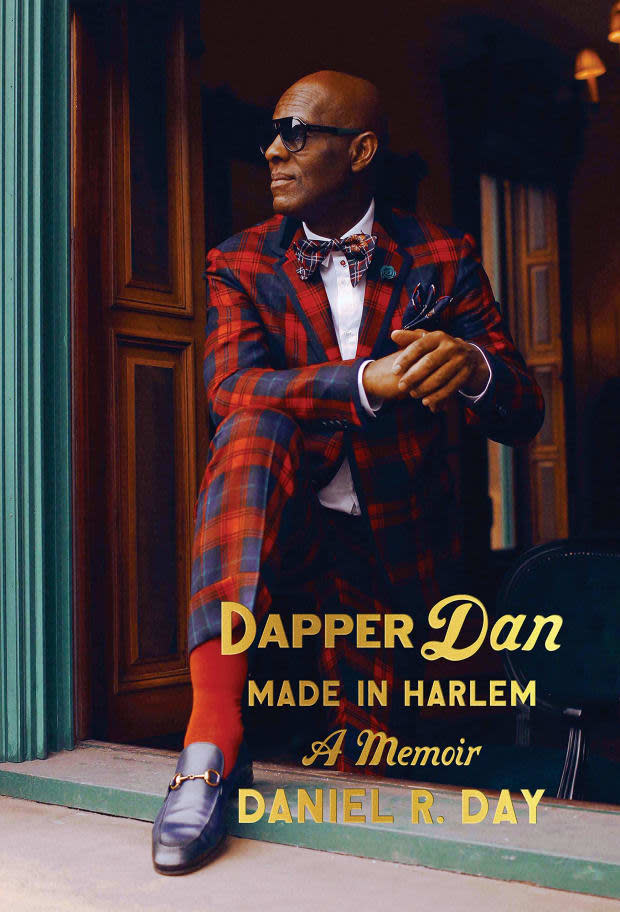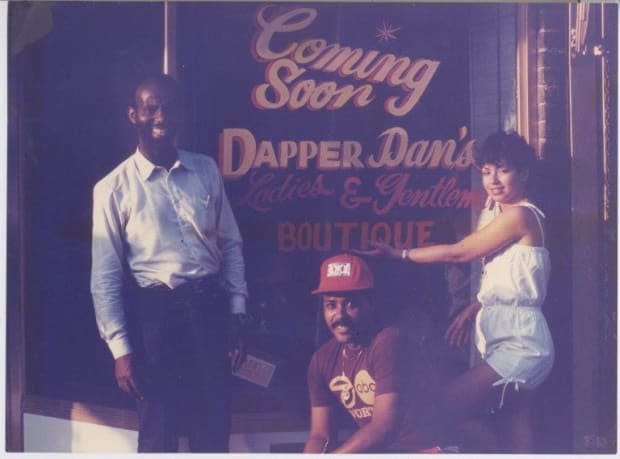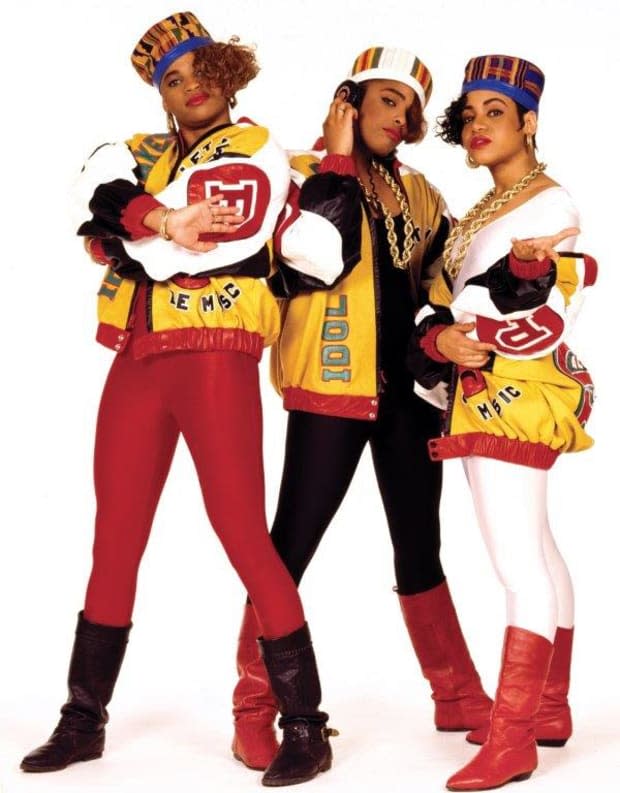'Dapper Dan: Made in Harlem' Is an Engaging Look at the Life of a Fashion Legend in His Own Words
Daniel "Dapper Dan" Day's absorbing new memoir tells his life story, including his wholly original rise to fashion icon status.

"Dapper Dan: Made in Harlem" tells the captivating, inspiring and at times raw and emotional story of Daniel R. Day, the man behind the legend, in his own words, with an assist from writer Mikael Awake.
Born in the summer of 1944, Day grew up in a Harlem that he says operated and felt like the tight-knit Southern rural communities both his parents and many of the family's neighbors hailed from (as part of the Great Migration): Doors were seldom closed, let alone locked, and neighbors knew one another from the small towns they'd left behind. Throughout his life, Day found work and made money in the drug trade, dice, journalism, sales and marketing, and the "paper game," before turning his hard-working disposition and eye for style to fashion, first selling clothes out of his trunk and later opening a fur store that morphed into his famed custom clothing boutique, Dapper Dan's.
Related Articles
How Dapper Dan Went From Harlem's Best-Kept Secret to International Fashion Icon
Why Bootleg Gucci Is to Some, More Authentic Than the Real Thing
Gucci and Dapper Dan's First Collaboration Is Here
The story starts long before Day was a fashion icon, but it's clear from the beginning that style played an important role in his life from childhood on. From observing the numbers kings and queens who ran Harlem's gambling scene in the 1950s and '60s and how well they dressed, to his introduction to custom tailoring in Liberia, Day's story is peppered with instances showcasing his keen sense of style and perhaps more importantly, his understanding of the power that came with looking fly.

When the story gets to the heyday of Dapper Dan's Boutique and its customized Gucci, Louis Vuitton, Fendi and MCM clothing (which Day calls "knock ups," not knock offs; more of an homage with a customization bent to it), the building blocks of Day's journey are well established. Day was in his late 30s when he opened the boutique and started to see it thrive. Understanding everything that came before — his childhood, his family dynamic, his addiction, the dice, his writing, his trips to Africa, his time in jail, the "credit card hustle," his interest in the metaphysical and spiritual, his up-close-and-personal view of Harlem's changing streets — is key to knowing how Day's custom fashion empire came to be. He says in his memoir that fashion wasn't about expression for him, it was about power — the power clothes have to cut "across social and economic lines," the power of flyness.
And what power Day had. He was an outsider in the fashion world — not formally trained (Day's textile and production know-how is largely self-taught), and also seen as an outsider by those on the inside (he describes walking into Louis Vuitton on Fifth Avenue and feeling the whole store tense up). There weren't many Black fashion students or Black-owned luxury goods factories around at the time for him to learn from or work with. But Day saw the opportunity to cater to a clientele that the exclusive high-fashion world kept on the outside: the "bosses and kingpins and hustlers" of his community who felt as uncomfortable going into those downtown luxury stores as he did. With the hard work and studious, methodical nature he applied to every other pursuit in his life, he studied up, taught himself how to silk-screen, hired a Senegalese tailor, Big Sek, and started to fill the Harlem community's demand for clothing that bore the marks of a fashion insider but with an outsider's twist: customized to how Day and the client thought would look best (speaking to the knock-ups-not-knock-offs mentality). Day studied the history of heritage brands like Gucci and Fendi's logos to learn how the symbols had evolved into status symbols, the core of a brand's power. His customers wanted to buy into that power, and Day saw a way for them to do so without compromise — designed and built for them.
There were setbacks, of course, but soon the hip-hop and sports worlds exploded with stars (LL Cool J, Salt-N-Pepa, Mike Tyson, Eric B. & Rakim, to name a few) wearing Dapper Dan's Boutique originals. His work popped up on MTV, and in one memorable instance, the boutique was mentioned on the news as the site of an infamous fight between Mike Tyson and Mitch Green.

Then the high-fashion world eventually took notice, serving Day with lawsuits that, in conjunction with an attempted kidnapping that sent him to the hospital with a gunshot wound, eventually led him to shut down his boutique. Even knocked down, as he had been previously when he battled a heroin addiction or spent time in jail, Day is nothing if not a survivor who has always been motivated first and foremost by providing for his family. After a period of hibernation and some soul searching of the metaphysical kind (a common occurrence in his memoir), Day resurfaced. He crossed the country, visiting Black communities in different cities and designing clothing/filling orders largely by word of mouth, keeping his work underground so as not to attract the public attention that led to his previous legal problems. Day's most recent 2018 collaboration with Gucci isn't mentioned in the book, neither the men's line nor the current atelier in Harlem, except in photos and the acknowledgments.
"Dapper Dan: Made in Harlem" is more than a fashion story and more than a personal story. It is part fashion story; part personal memoir; but also part business book extolling the virtues of creativity and hard work; part metaphysical and spiritual exploration; part history of Harlem, its Black community and diverse cultural mix, and fashion and hip-hop's intersection; part meditation on identity and more. If that sounds like too much, it's not. All of these elements add up to tell Day's wholly original story; they are inextricably linked with his personal narrative, his iconic imprint on the fashion world. Dapper Dan contains multitudes, and so does his book. Pick it up to spend some time in the mind of a truly creative and clever innovator.
"Dapper Dan: Made in Harlem," published by Random House, is available for purchase here.
Please note: Occasionally, we use affiliate links on our site. This in no way affects our editorial decision-making.
Sign up for our daily newsletter and get the latest industry news in your inbox every day.